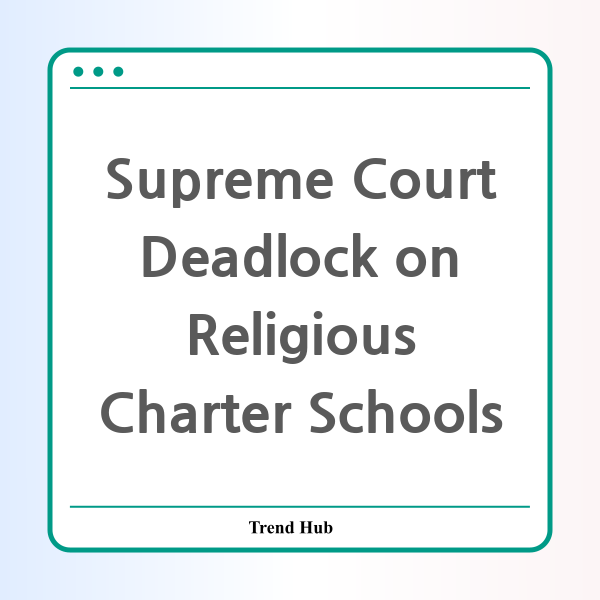* This website participates in the Amazon Affiliate Program and earns from qualifying purchases.

What happens when the highest court in the land is evenly split on a pivotal issue that blurs the lines between religion and education? The recent 4-4 tie vote on the proposed St. Isidore of Seville Catholic Virtual School in Oklahoma has left many questioning the future of public funding for religious charter schools in the United States.
On a pivotal Thursday, the Supreme Court's deadlock effectively ended the idea of a publicly funded Catholic charter school, marking a significant moment in the ongoing debate about the intersection of public education and religious instruction. The tie vote preserved the Oklahoma Supreme Court's ruling, deeming the proposed charter school unconstitutional, thereby maintaining the status quo regarding taxpayer funding for religious education.
This landmark case originated when the state charter school board approved the establishment of St. Isidore, which aimed to provide education in line with Catholic teachings. The proposal ignited fierce discussions about the implications of intertwining faith with public school funding, with opponents warning it could undermine the separation of church and state and detract resources from public schools.
The Supreme Court's decision – or lack thereof – has broader implications beyond Oklahoma. Charter schools currently serve approximately 3.8 million students across the U.S., and in most states, including Oklahoma, they are classified as public institutions. This designation means they receive state funding and must adhere to specific regulations, distancing them from sectarian education.
One notable aspect of the recent Supreme Court proceedings was the recusal of Justice Amy Coney Barrett, who has ties to Notre Dame Law School, an institution closely associated with the St. Isidore initiative. Her decision not to participate in the case played a critical role in the court's inability to reach a conclusive verdict, resulting in a stalemate that leaves many questions unanswered. Critics are concerned that the deadlock prevents setting a clear precedent but also leaves the door open for future litigation on similar matters.
The court's conservative justices appeared to favor the establishment of the charter school, while their liberal counterparts strongly opposed it. Chief Justice John Roberts, often regarded as a swing vote, seemed to side with the liberals during this crucial moment, suggesting a nuanced approach to the complex issue.
As debates continue and more states consider integrating religious education into public school systems, the implications of this ruling extend across the nation. With various conservative-led state efforts pushing for religious presence in public education, this case becomes a significant touchpoint in the ongoing cultural discussions surrounding the role of faith in public life.
Whether this topic will return to the Supreme Court remains uncertain. However, legal experts suggest that as the push for religious charter schools continues, we may see more cases challenging the current rulings. Advocates for religious freedom view this outcome as a setback, while opponents appreciate the protection it provides for the separation of church and state.
In summary, while the St. Isidore case may have concluded in a tie, the underlying issues about taxpayer funding for religious schools and the establishment clause of the First Amendment are far from resolved. The implications of this decision reflect broader societal questions about the intersection of education, government, and religion that will undoubtedly continue to evolve in the coming years.
* This website participates in the Amazon Affiliate Program and earns from qualifying purchases.